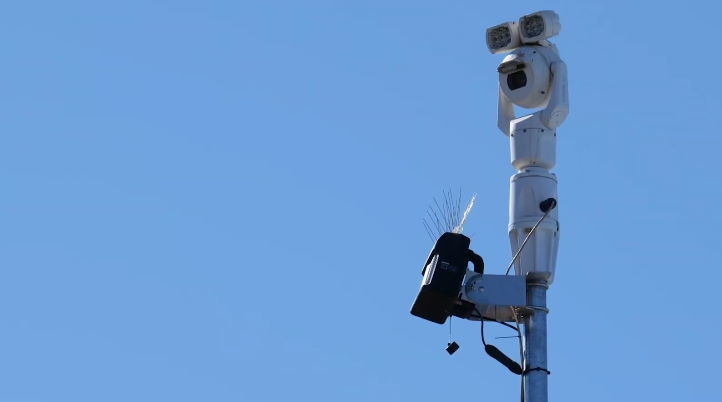Aveillant, a Thales company and developer of Holographic radar technology, will help the National Beyond Visual Line of Sight Experimentation Corridor (NBEC) to determine how manned and unmanned aircraft can best share the skies.
Created by Cranfield University, Blue Bear Systems Research, Thales and Vodafone, the NBEC stretches 10 miles across Bedfordshire in the UK, from Blue Bear’s headquarters in Oakley to Cranfield University’s Global Research Airport. The aim is to provide a safe, managed environment for drone and unmanned aircraft experimentation that will work toward their integration into controlled and uncontrolled airspace. This will allow the integration and testing of new technologies together with the involvement of industry and regulatory stakeholders to provide a national capability that accelerates leading-edge research. In the summer of 2020, other organizations will be able to use the NBEC to test their UTM concepts in a safe managed environment and develop regulatory frameworks.
In a series of tests performed at the NBEC, Aveillant's Gamekeeper 16U Counter-UAS Holographic radar helped to successfully detect and track several different drones.
“With excellent correlation between the detected and real tracks,” said Aveillant Chief Executive Officer Dr. Dominic Walker. “This test proves and de-risks the technology which will underpin the NBEC airspace monitoring.”
Instead of using a rotating antenna to send out a pulse of radio waves and receive the echo to calculate the range and direction of a target, Aveillant’s technology floodlights a volume of interest on transmit and forms multiple simultaneous receive beams that fill the illuminated volume. While traditional radar technology returns a dot on a radar screen every few seconds, the Gamekeeper 16U extracts individual targets’ information in full three dimensions to a range of 5km. By using advanced signal processing techniques, the company claims that “it lends itself to very high levels of target discrimination and low false alarm rates.”
Recently, Operational Solutions (OSL), a UK Counter Drone systems developer using Aveillant’s radar technology, signed a Memorandum of Understanding with Airways New Zealand to further develop the drone detection system currently being trialed at Auckland Airport. The system consists of the OSL Command and Control/Intelligent fusion software, Aveillant’s Gamekeeper 16U, and AI-enabled camera technology. Together, OSL and Airways New Zealand want to develop a world-leading C-UAS and UTM system. By combining OSL’s C-UAS capability with Airshare, the UTM from Airways New Zealand, it will be possible to facilitate and authorize drone flights to operate safely in the airspace around airports.
Earlier this year, OSL also deployed its FACE C-UAS system and Aveillant’s radar at Heathrow airport in the UK to keep the country’s busiest airfield free from drones. The FACE system, which stands for Fusion, Assessment and Control Engine, detects and tracks drones in surrounding airspace and alerts airports of unauthorized drone use quickly and efficiently. Moreover, this system can also locate drone pilots themselves and identify their location.
Another company, Fortem Technologies, the developer of an autonomous Counter UAV solution, recently announced a complete end-to-end C-UAS Solution with the addition of the R30 to the TrueView family of radar. To detect and mitigate rogue drones, the TrueView R30 radar offers clutter rejection, making it a high performing, cost-effective and compact radar. Similar to Aveillant’s Gamekeeper, it features a 3D radar sensor that detects and monitors drones with precision, day or night, in adverse weather conditions.
“We now have a cost-effective, short and mid-range networkable radar with accuracy and features perfect for diverse venues, campuses, and entire metro regions,” said Timothy Bean, CEO of Fortem Technologies. “The advancements Fortem has achieved with TrueView radar give security professionals the ability to see everything in their airspace at a lower cost point and higher accuracy and safety than ever before, while enabling unprecedented threat assessment capability.”
Last year, Fortem Technologies partnered with Unifly, a UTM provider, to develop a joint airspace safety and security solution for a drone-enabled society.
As the industry continues the search for the ultimate UTM platform to safely integrate drones within manned airspace, the development of Counter UAS (C-UAS) solutions becomes a critical piece of the puzzle. Otherwise, how will we track drones in the air without detecting them first?
















Comments